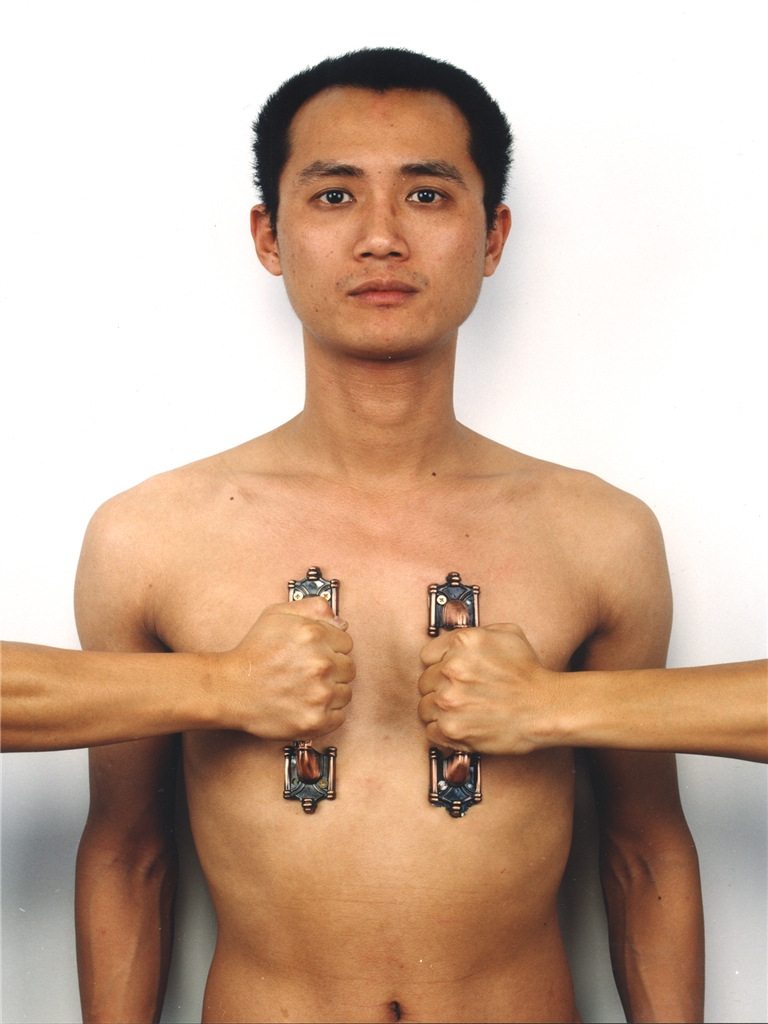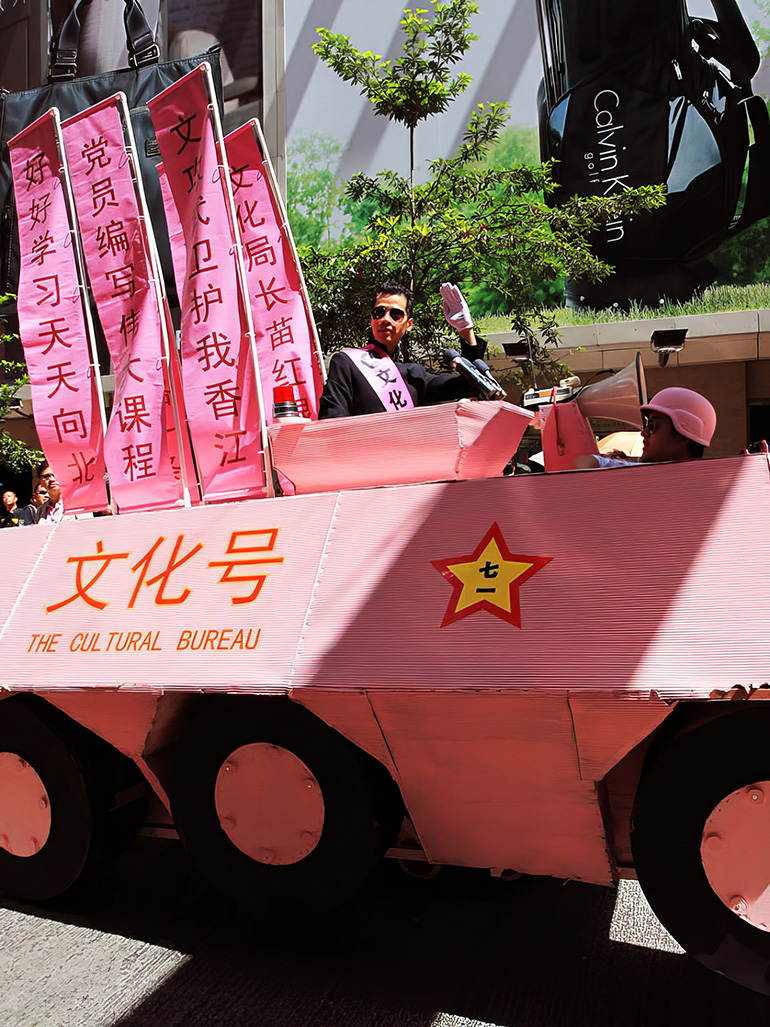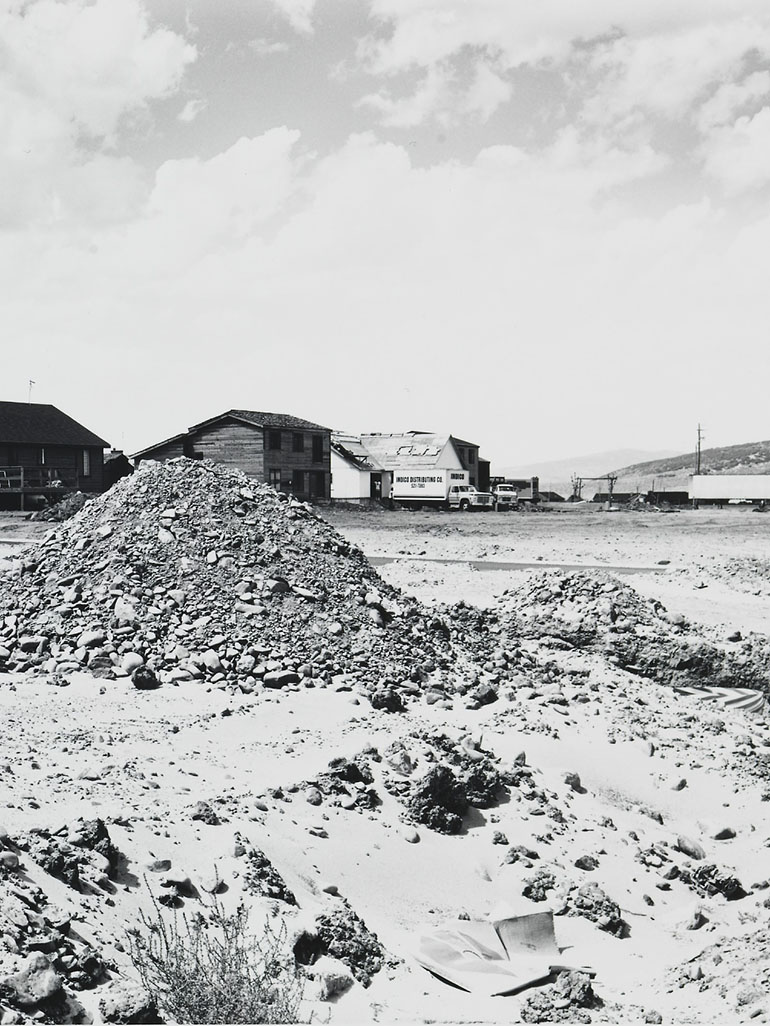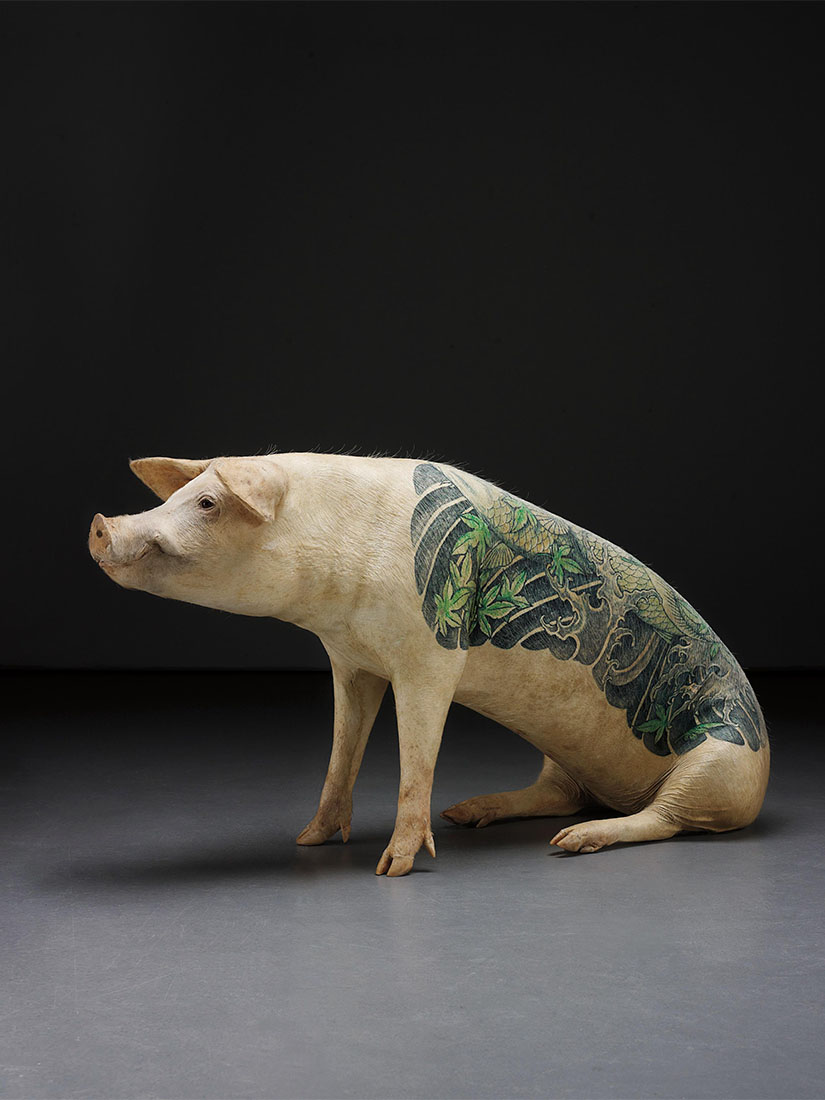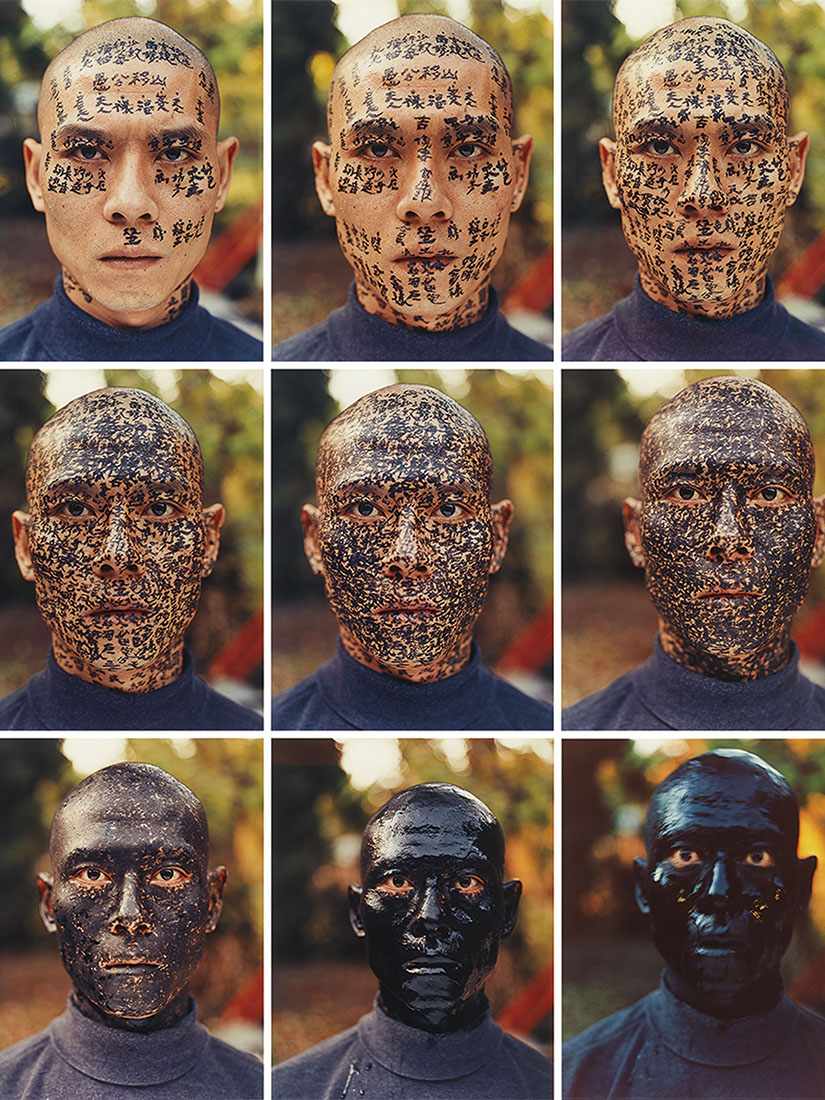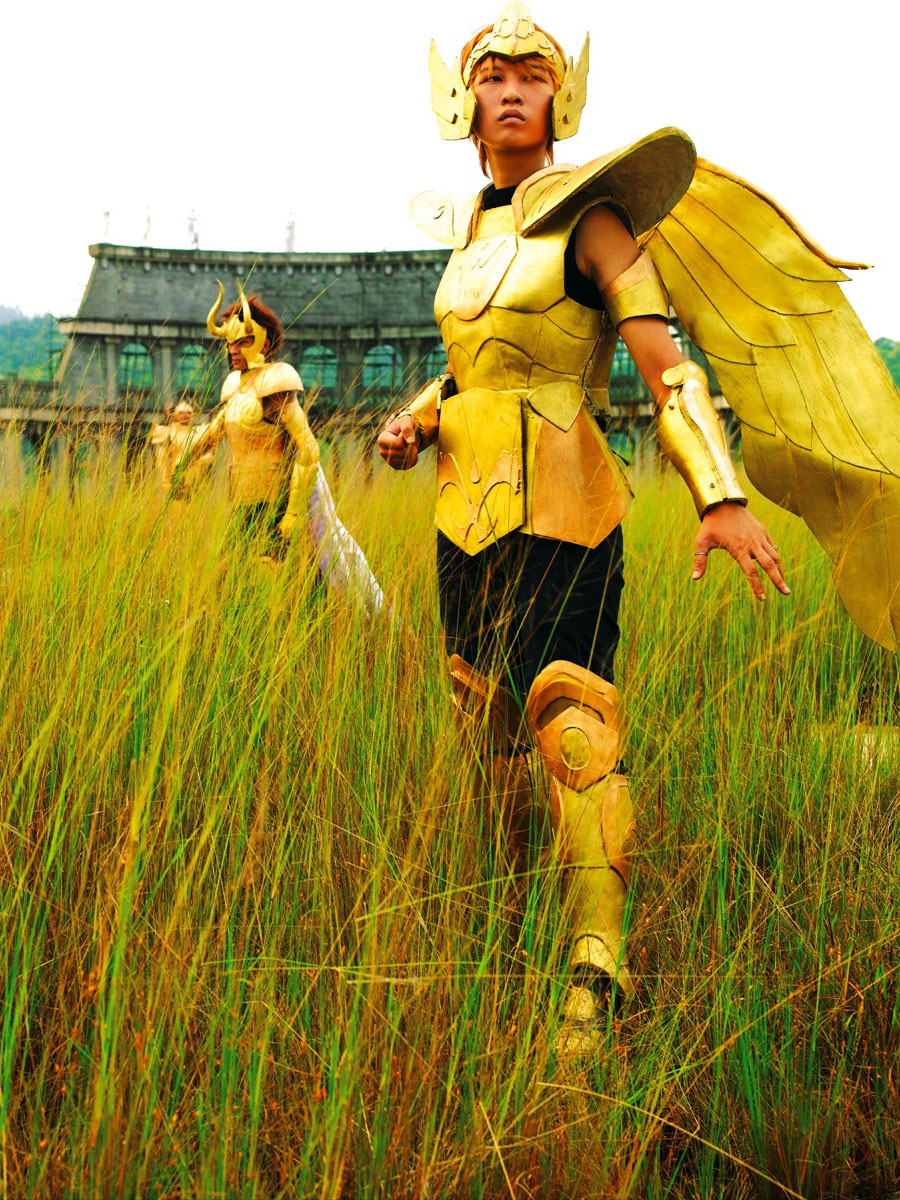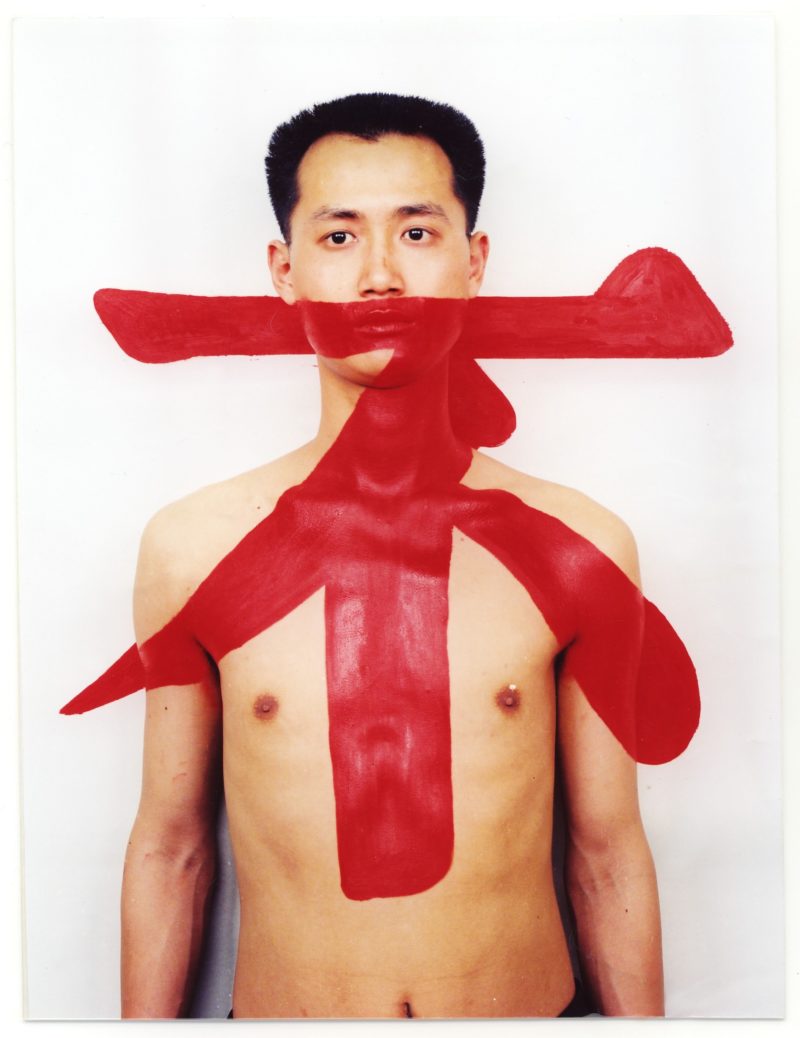
Who is Qiu Zhijie?
Qiu Zhijie 1 is well known for his capacity to add provoking new meanings to traditional Chinese calligraphy 2. In many of his works, Qiu incorporates calligraphy into modern media to fuse important elements from his culture into his art. His Tattoo series, released in 1994, explores the state of one’s independence and invisibility.
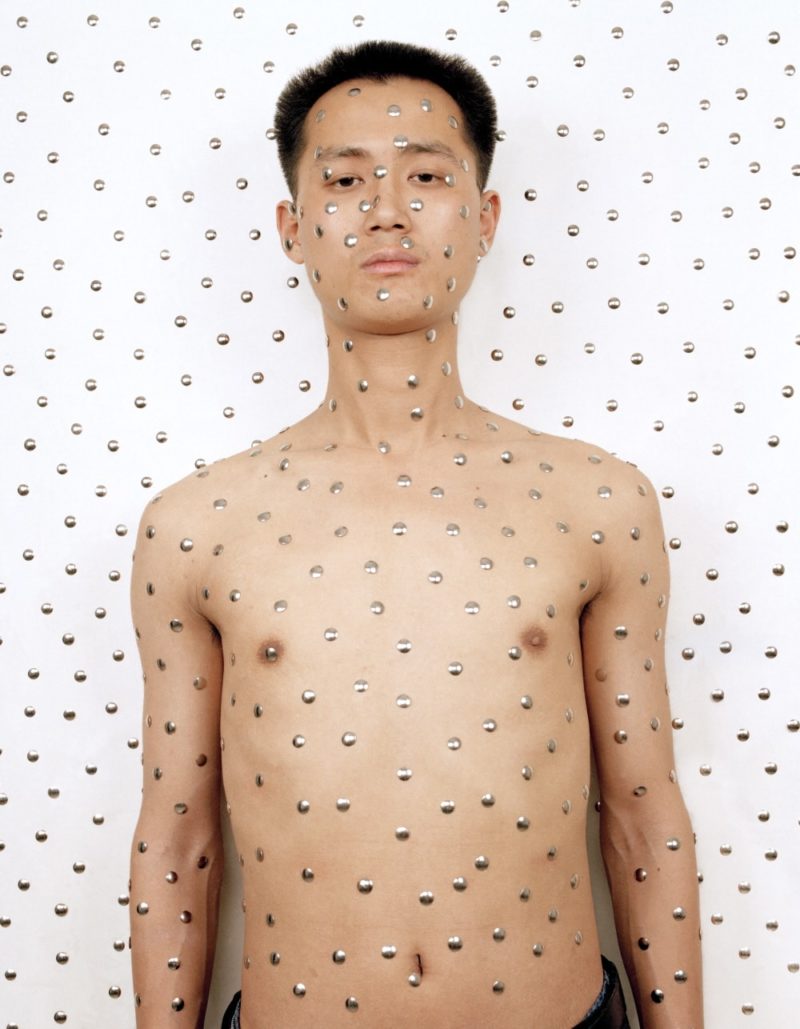
Qiu’s ‘Tattoo’ series
To highlight these elements, Qiu included large and oversized Chinese characters on his body and a white background behind him. The artist used a technique he calls cali-photography, whereby he utilized an electric torch to write his calligraphy. He then used a digital camera set on extended exposure to capture the writing before superimposing the shot on another photograph.
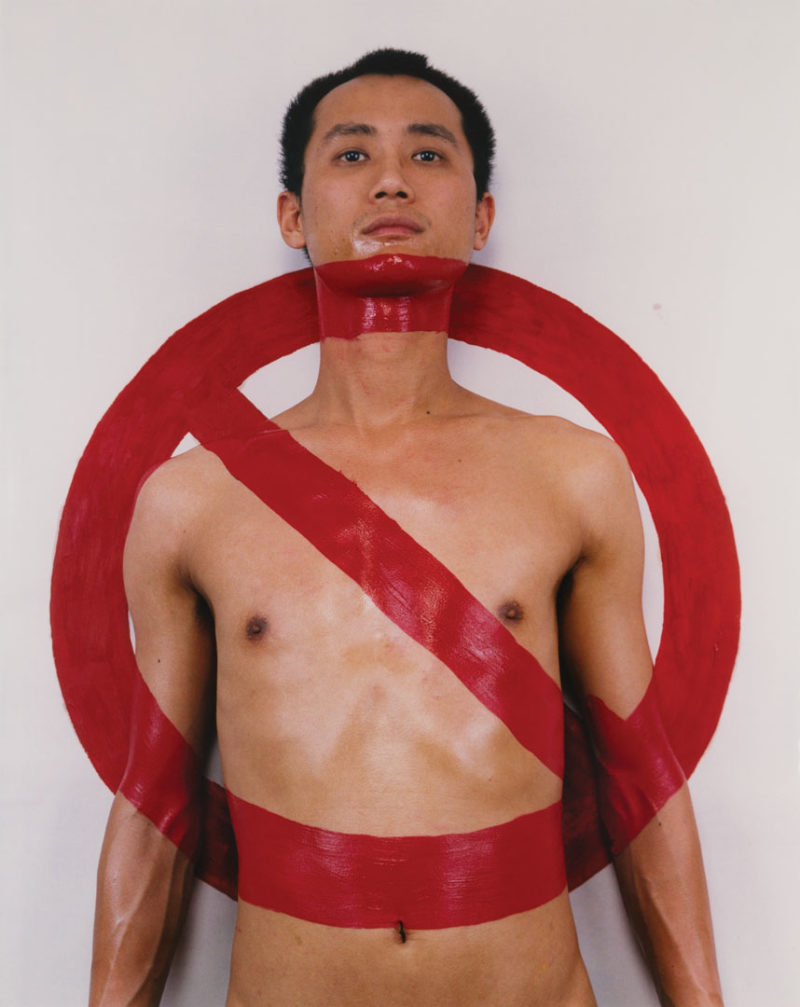
Qiu’s exploration of symbols
Qiu explores the burden that symbols have on the identity and the independence of a human being. His installation comments on the power that symbols have in society and how they can impose their ‘rule’ to affect how a person sees themselves and how they relate to others in society.
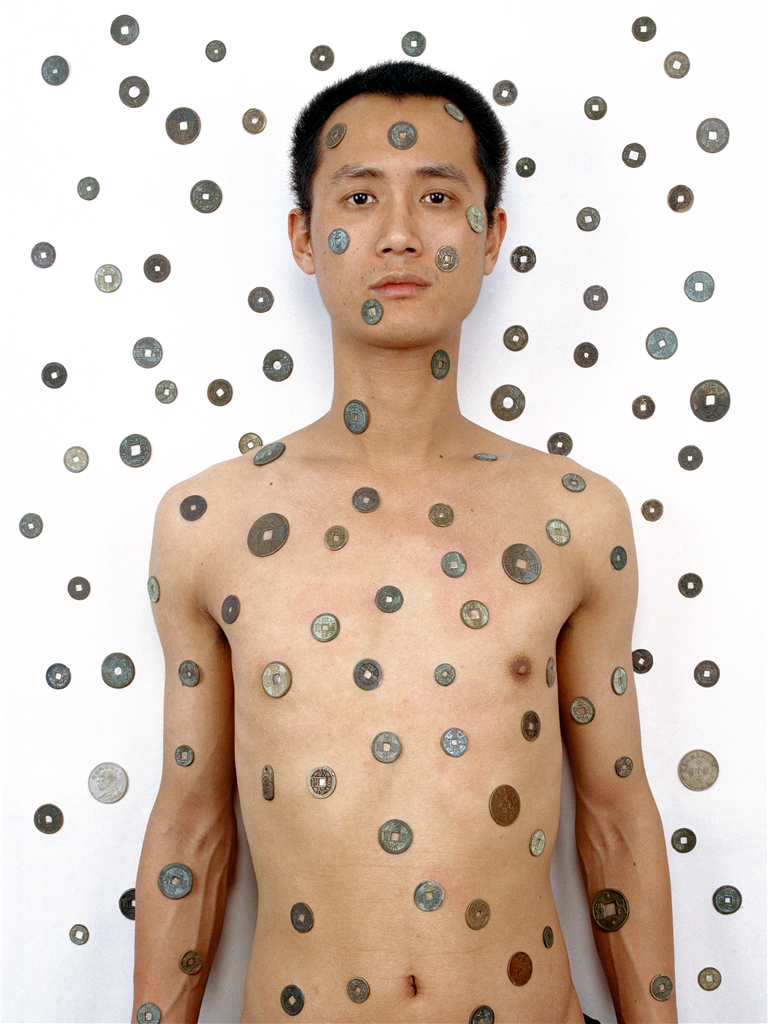
In short, the work explores the change that occurs in people as a result of societal symbols. Symbols can change a person until a person becomes a mere vehicle used to display logos and characters. Personal ideologies and personal expressions are replaced by the need to fit into an acceptable mold.

The meaning of the work
Although the symbols incorporated in the photographs are superimposed technologically, Qiu has done so expertly, such that they appear painted rather than photographed.
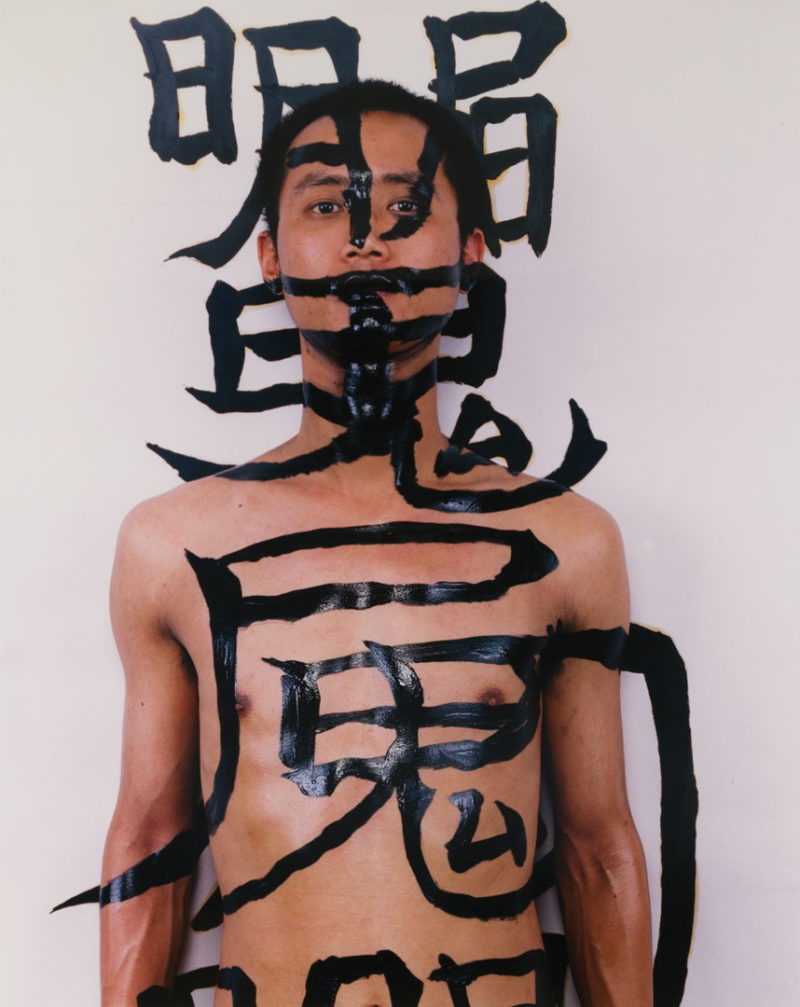
This reflects a crossing of mediums that became more and more acceptable in the art scene. The main calligraphic character used can be translated to mean ‘Bu’, which is the Chinese-language equivalent of the word ‘no’.
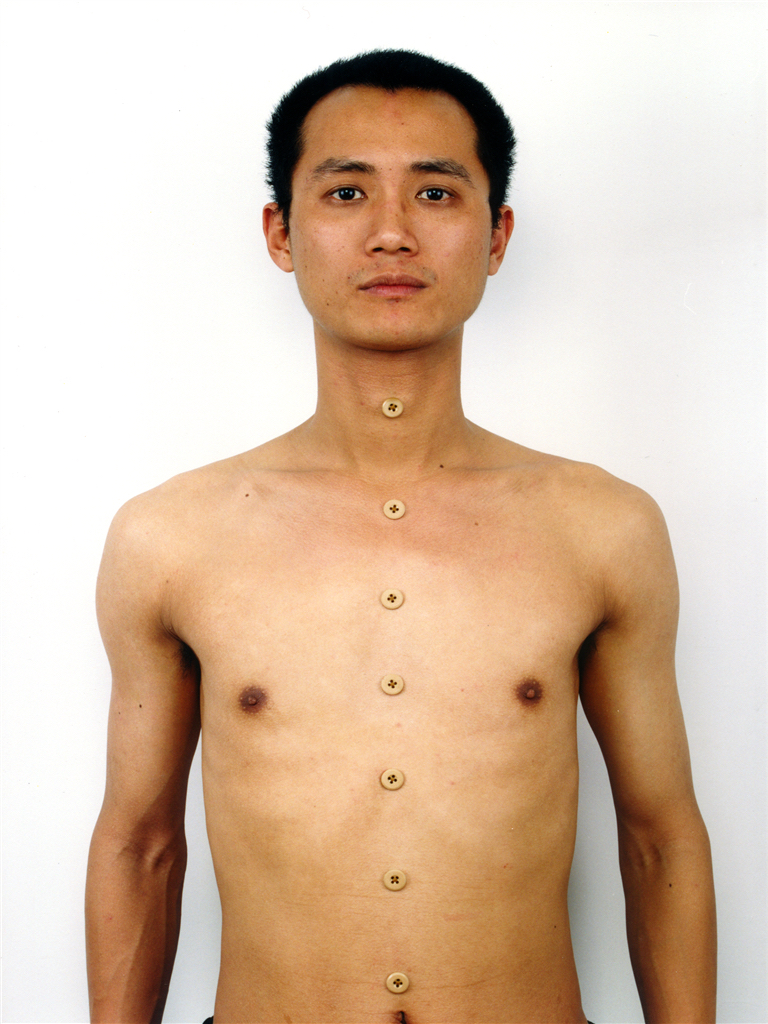
The imposition of the word no across the images could also be translated to signify the Chinese government’s imposition on the independence and individuality of its people. As such, apart from being a powerful social piece, it can also be categorized as a political piece.

Conclusion
Qiu Zhijie has managed to create a following for his work because of the diversity of his pieces. The manner in which he combines written and curatorial elements alongside his personal explorations of issues sets him apart from other contemporary Chinese artists. The title suggests that the imposition of the symbols is not just on the surface; it runs deep like a tattoo.
